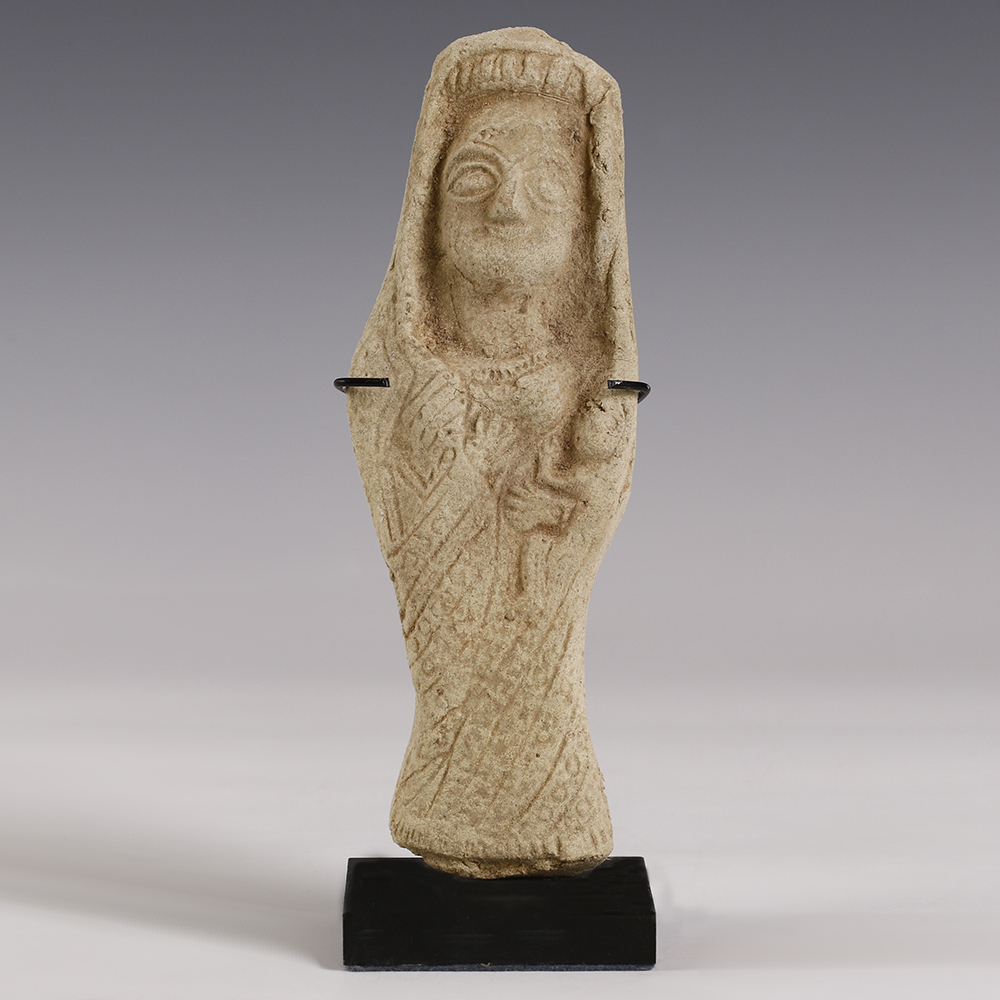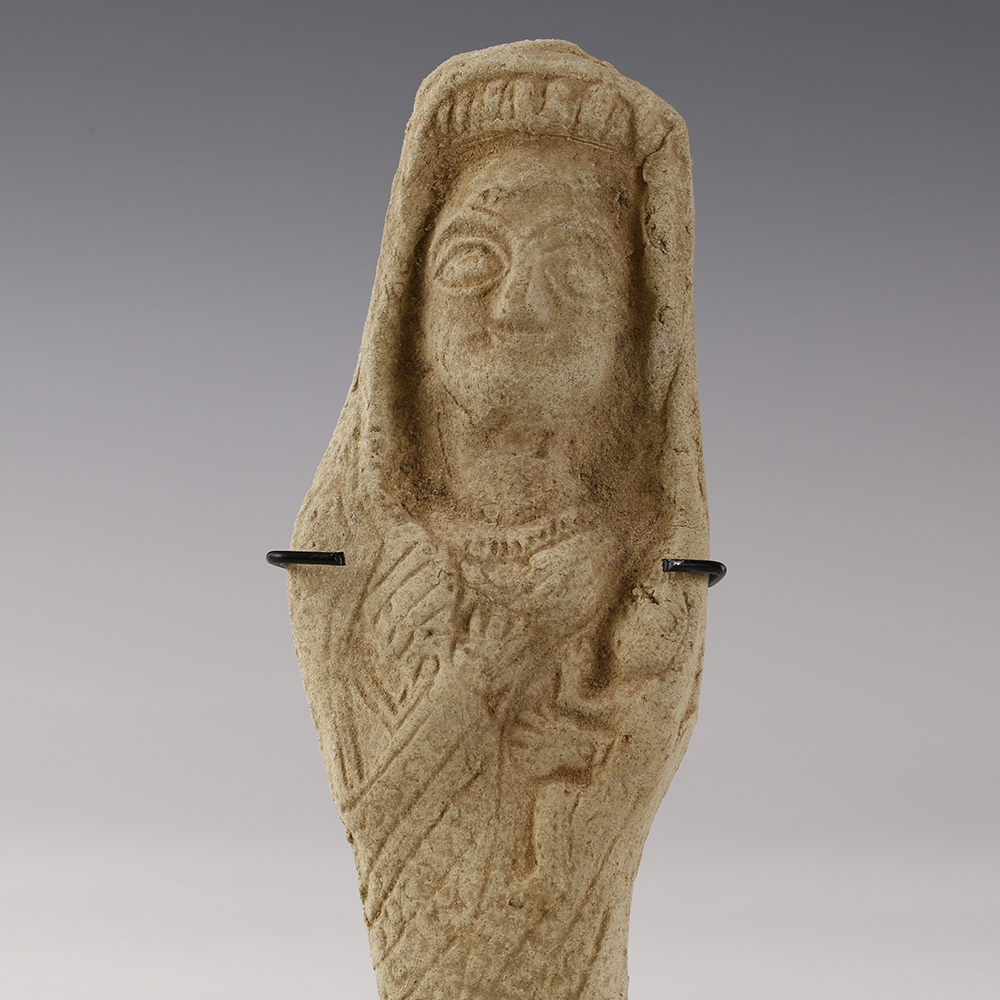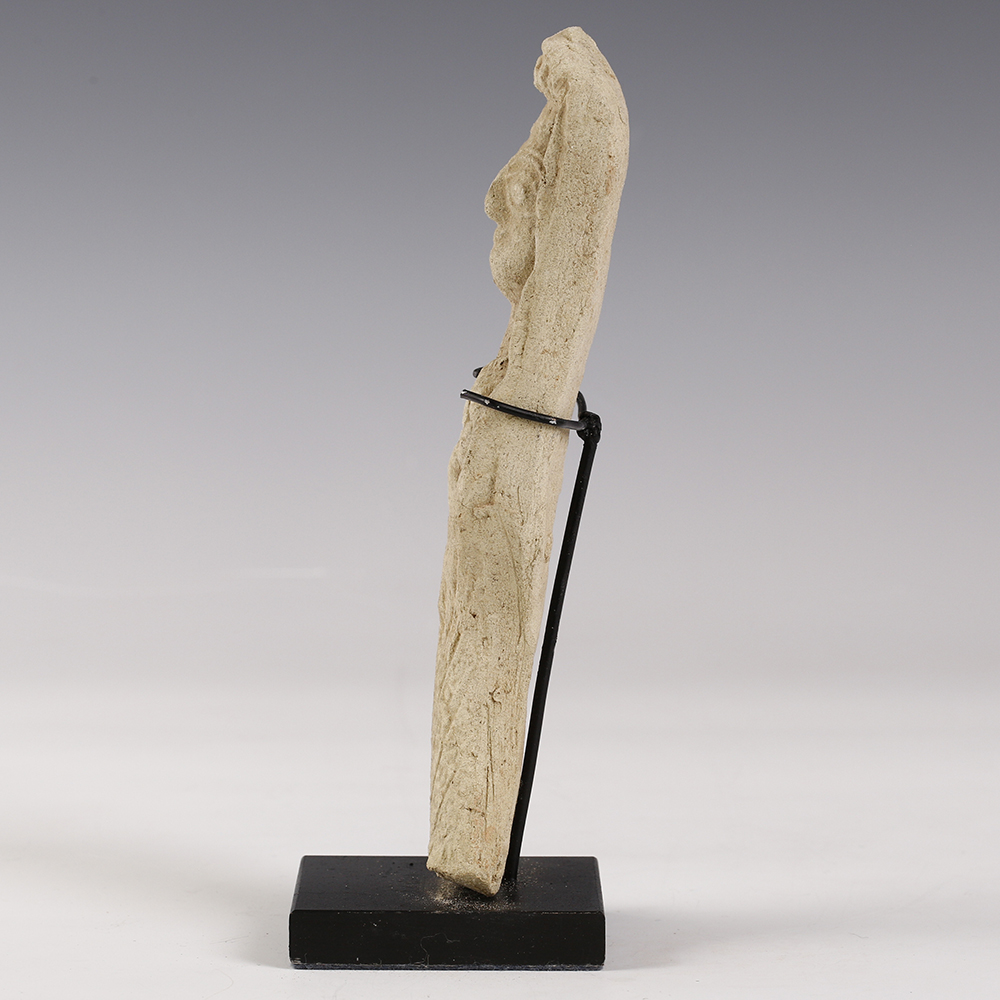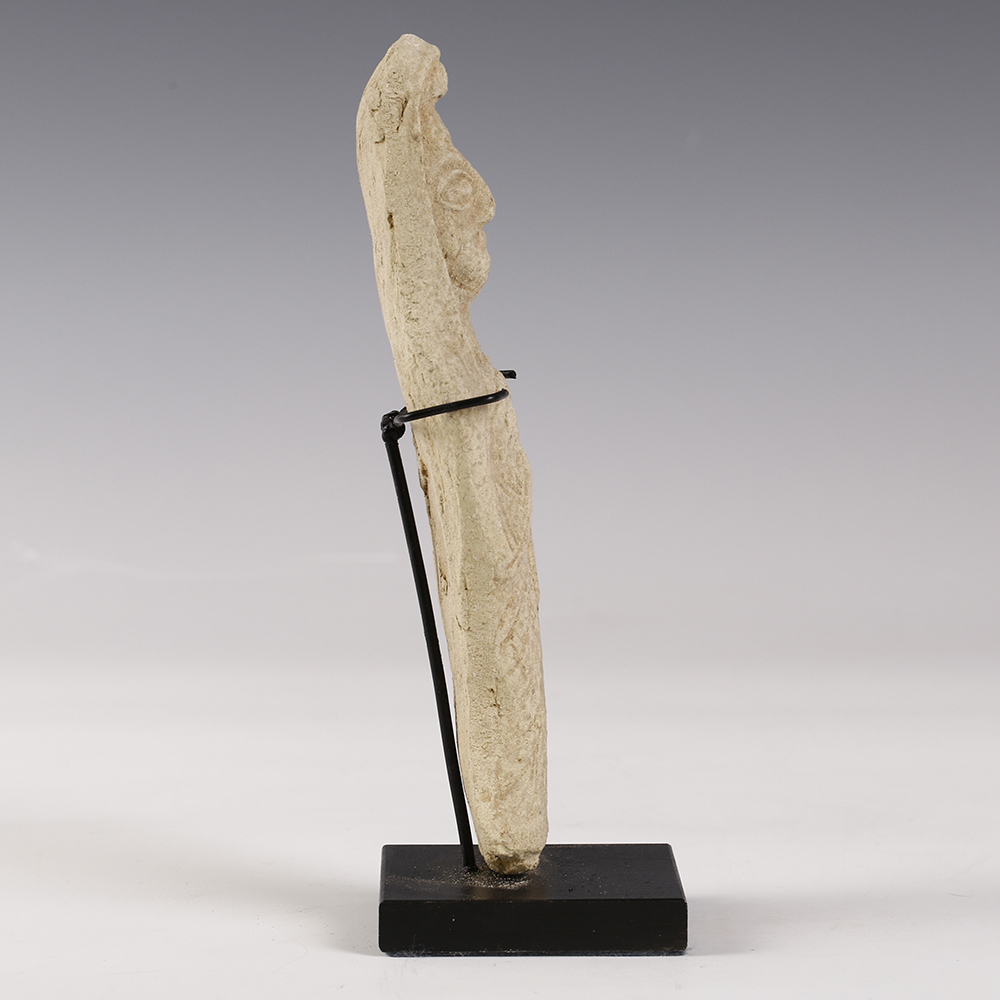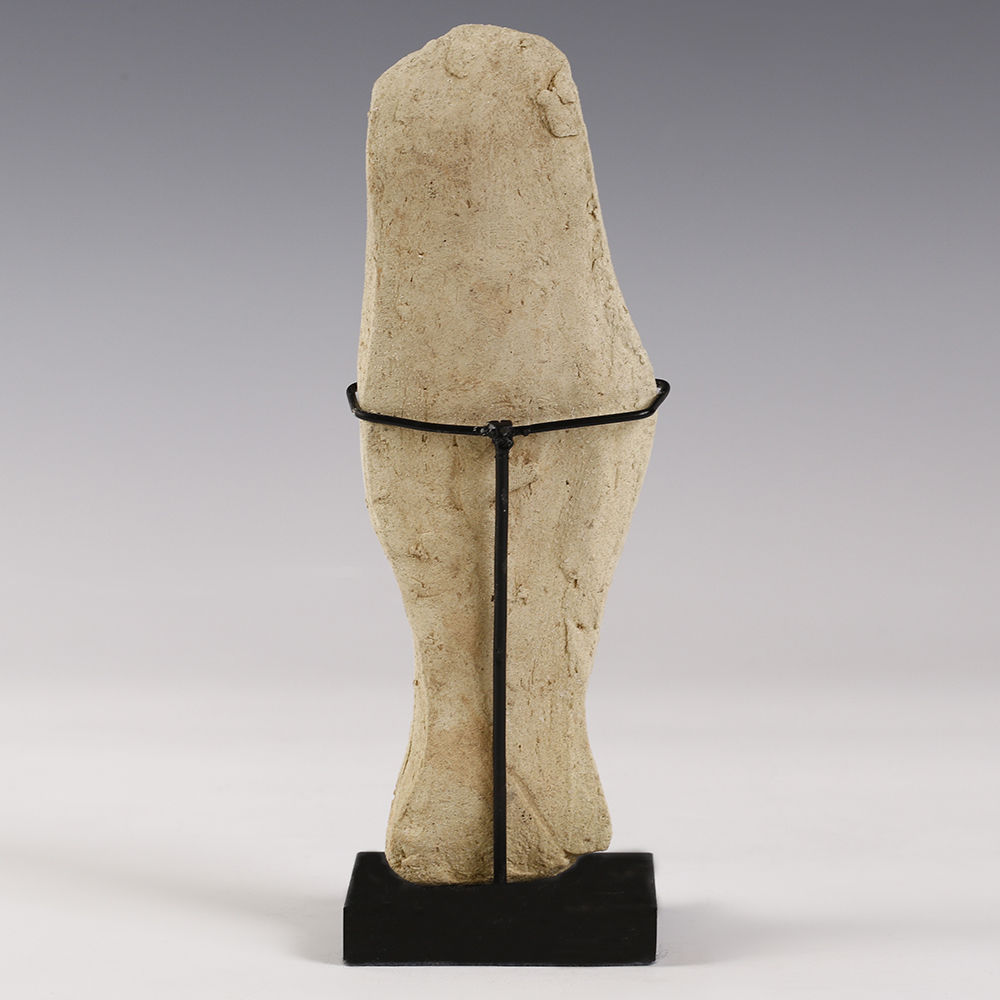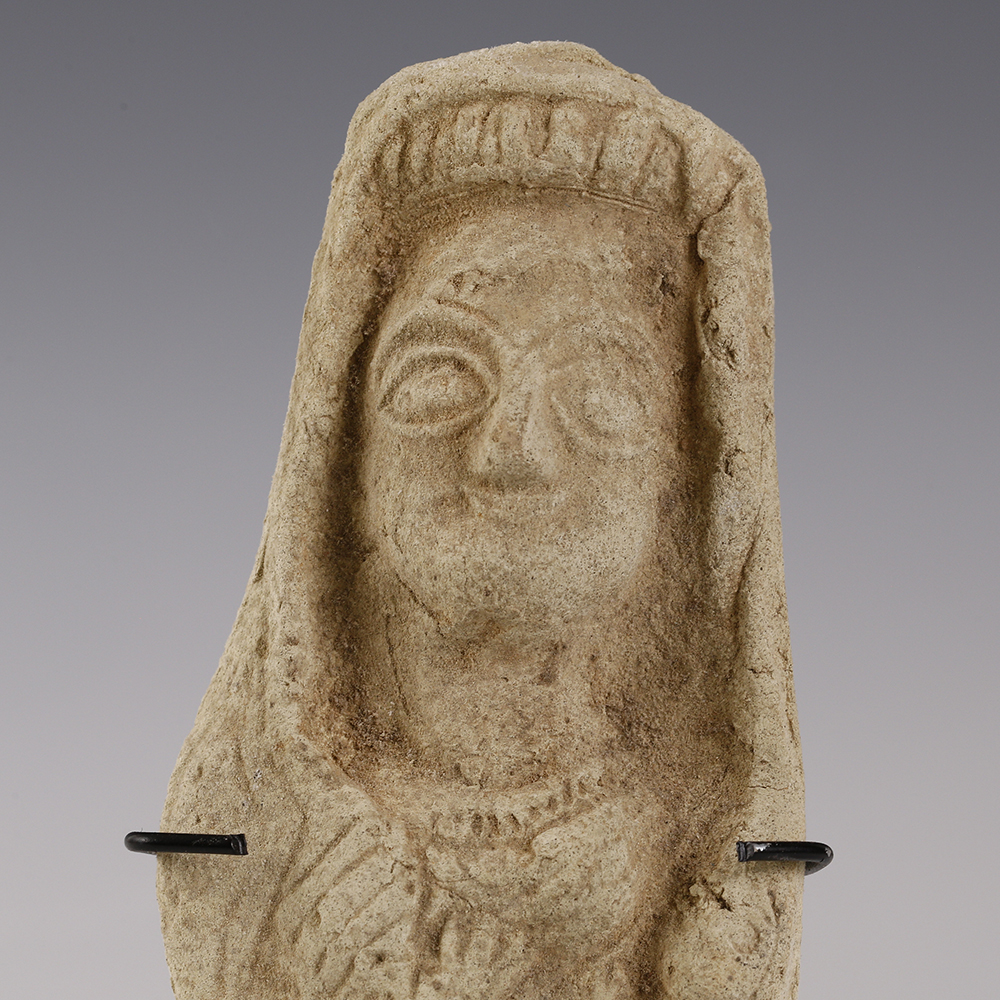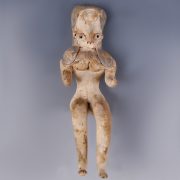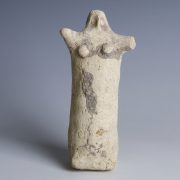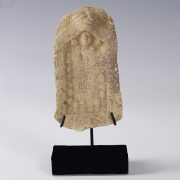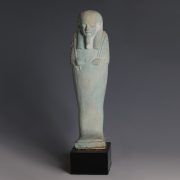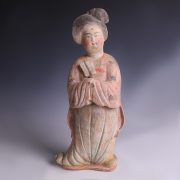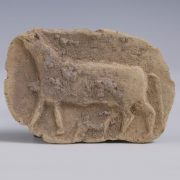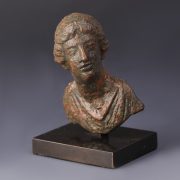Within ancient pan-Mediterranean cultural practices, female figurines portraying a mother holding or nursing a child, are defined as ‘kourotrophos’. The functions of kourotrophoi have been explored with various interpretations. Scholars tend to believe that they might have been used to bring a blessing for the fertility and well-being of the worshipers who dedicated them. Kourotophic images first emerged in Mesopotamia amongst a handful of cylinder seals from the Early Dynastic and Akkadian periods, where, a seated divine goddess held a child upon her lap. Nursing scenes, and the wide-ranging iconographies presenting a female holding an infant, were well preserved in Old-Babylonian and Parthian art. There is a rich corpus of terracotta figures that witness a strong association with the goddess Astoreth, whose name was altered to Ishtar within Assyro-Babylonian religions. The goddess Ishtar, who was derived from the Sumerian goddess Inaana, was worshipped as a significant female deity who represented fertility. This fine example presents ancient Parthian innovation in adopting a classical style and in embracing Mesopotamian traditions.
A Modelled Parthian Terracotta Kourotrophic Figurine
$492.03
A finely modelled Parthian terracotta kourotrophic figurine depicting a female wearing a richly jewelled robe and holding an infant to her chest. Her facial features are clearly portrayed in characteristic Parthian traditions, including deep-grooved eyebrows, two almond-shaped eyes, a pyramidal nose and a slightly arched lip that turns her facial expression into a gentle, sincere smile. She is presented wearing a back-mantle, fabric on both sides naturally hangs around her shoulders, accentuating feminine elegancy. Under the mantel, she might also be wearing a beaded diadem. A beaded necklace decorates her neck, echoing well with the rich ornaments shown on her garment. The heavy draperies and beaded decoration of the garment, are naturalistically expressed through neatly-arranged incisions and circles. One of her hands is presented placed in the middle of her chest, supporting her breast, which further confirms her identity as the Mesopotamian fertility goddess Ishtar.
Condition: Fine condition, with signs of ageing to the surface. The piece has been mounted on a custom-made stand for display
SOLD
| Weight | 650 g |
|---|---|
| Dimensions | W 6.7 x H 24 cm |
| Culture | |
| Pottery and Porcelain | |
| Region |
